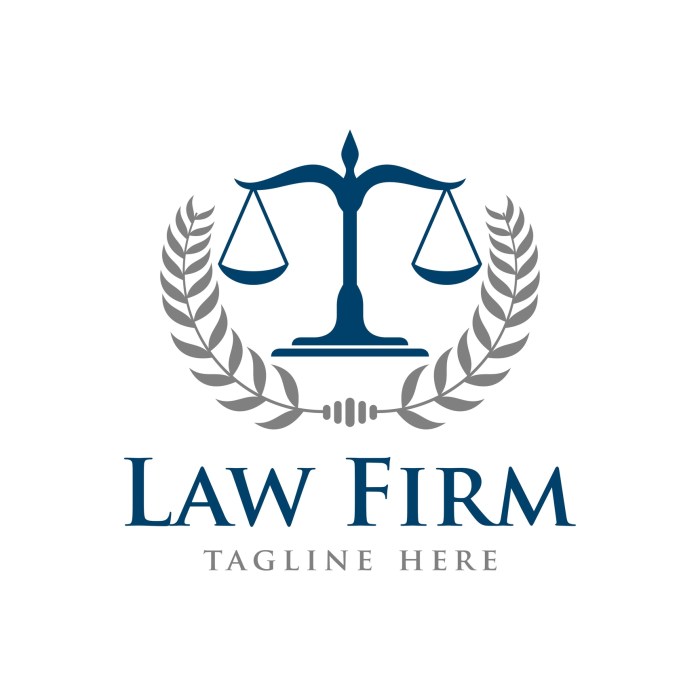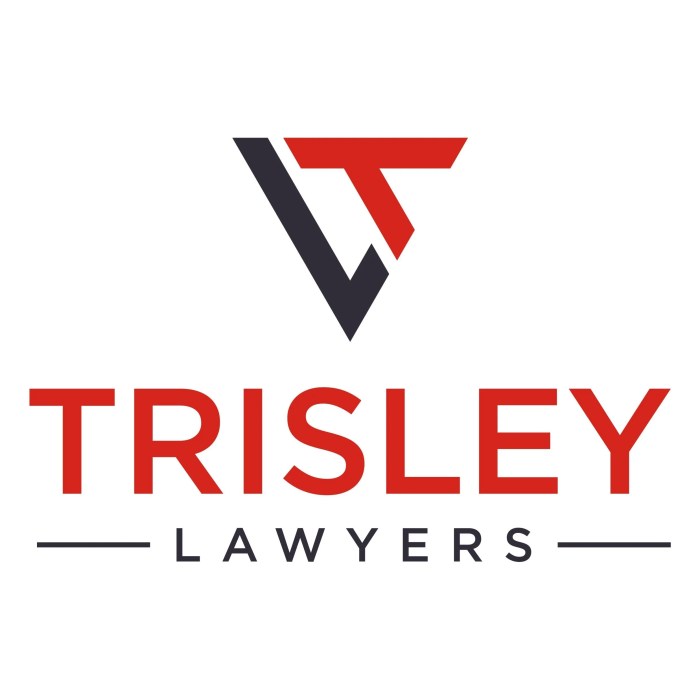Navigating the Trademark Maze: A Comprehensive Guide from Your Trusted Trademark Law Firm
In the ever-evolving landscape of intellectual property, trademarks serve as beacons of brand identity and market differentiation. Our esteemed trademark law firm embarks on a journey to unravel the intricacies of trademark law, guiding you through the legal labyrinth to protect and leverage your unique brand assets.
From understanding the fundamental principles of trademark protection to navigating the complexities of international trademark registration, our comprehensive guide delves into the nuances of trademark law, empowering you with the knowledge and strategies to safeguard your brand’s legacy.
Trademark Law Overview

In the realm of intellectual property, trademark law plays a pivotal role in safeguarding the distinctive identities of products and services, granting exclusive rights to their owners. It recognizes the immense value of trademarks as symbols of reputation, quality, and origin, thereby fostering fair competition and consumer protection.
Trademarks encompass a wide array of identifiers, including brand names, logos, slogans, and even distinctive shapes, colors, or sounds. These marks serve as the cornerstone of brand identity, allowing consumers to readily distinguish between similar offerings in the marketplace.
Famous Trademarks and Their Significance
The legal significance of trademarks is exemplified by the iconic brands that have become household names across the globe. Consider the instantly recognizable golden arches of McDonald’s, the swoosh of Nike, or the bitten apple of Apple. These trademarks have not only propelled their respective companies to remarkable heights but have also become integral parts of our cultural lexicon.
The value of a trademark lies in its ability to generate goodwill and customer loyalty, translating into substantial economic benefits. Strong trademarks command premium prices, attract top talent, and inspire investor confidence, contributing to the overall success and longevity of a business.
Obtaining a Trademark
The process of obtaining a trademark involves several key steps and requirements. It begins with a comprehensive trademark search to ensure that the desired mark is not already in use or confusingly similar to an existing trademark. Once the search reveals no conflicting marks, a trademark application must be filed with the appropriate government agency, typically the United States Patent and Trademark Office (USPTO).
The application process involves submitting detailed information about the trademark, including its design, description, and intended use. The USPTO will then examine the application to ensure that it meets all legal requirements and does not infringe upon the rights of others.
If the application is approved, the trademark will be registered and granted exclusive rights to the owner for a period of ten years, renewable indefinitely upon payment of maintenance fees.
Trademark Infringement and Remedies

Trademark infringement occurs when someone uses a trademark without the permission of the trademark owner. This can be done in a variety of ways, such as using the trademark on a product or service, using it in advertising, or using it in a way that is likely to cause confusion among consumers.
There are a number of defenses that can be raised against a trademark infringement claim. One common defense is that the defendant was using the trademark in a fair use context, such as using it to describe a product or service or to comment on the trademark owner’s goods or services.
Legal Remedies for Trademark Infringement
If a trademark owner is successful in proving that their trademark has been infringed, they may be entitled to a number of legal remedies. These remedies include:
- Injunctions: An injunction is a court order that prohibits the defendant from continuing to infringe the trademark.
- Damages: Damages are a monetary award that is intended to compensate the trademark owner for the losses they have suffered as a result of the infringement.
- Profits: In some cases, the trademark owner may be entitled to the profits that the defendant has made from the infringement.
Trademark Maintenance and Renewal
Maintaining and renewing a trademark is crucial to protect and preserve the rights associated with it. It involves specific procedures and requirements to ensure the trademark remains valid and enforceable. Failing to maintain or renew a trademark can have significant consequences, including the loss of exclusive rights and the risk of infringement by others.
Procedures for Maintaining a Trademark
1. Filing a Declaration of Use
Every six years after the initial registration, the trademark owner must file a Declaration of Use (DOU) with the USPTO.
The DOU verifies that the trademark is still in use in commerce.
Failure to file the DOU can lead to the cancellation of the trademark.
2. Renewal Application
Every ten years after the initial registration, the trademark owner must file a Renewal Application with the USPTO.
The Renewal Application includes the trademark registration number, the name and address of the owner, and a fee.
Failure to file the Renewal Application can result in the expiration of the trademark.
3. Changes to the Trademark
Any changes to the trademark, such as the name, logo, or design, must be reported to the USPTO within six months of the change.
Failure to report changes can result in the loss of trademark rights.
4. Infringement Monitoring
Trademark owners should actively monitor the marketplace for potential infringement of their trademark.
This includes searching for unauthorized use of the trademark, such as counterfeit products or similar marks.
Prompt action should be taken to address any infringement.
Consequences of Failing to Maintain or Renew a Trademark
1. Loss of Exclusive Rights
Failing to maintain or renew a trademark can lead to the loss of exclusive rights to the mark.
This means that others can use the mark without permission, potentially damaging the brand reputation and causing confusion in the marketplace.
2. Cancellation of Trademark Registration
If a trademark is not maintained or renewed, the USPTO may cancel the trademark registration.
This means that the trademark is no longer protected and can be used by anyone.
3. Increased Risk of Infringement
Failing to maintain or renew a trademark increases the risk of infringement by others.
This can lead to legal disputes, loss of revenue, and damage to the brand reputation.
4. Difficulty in Enforcing Trademark Rights
A lapsed trademark is more difficult to enforce against infringers.
Courts may be less likely to grant injunctions or award damages for infringement of a lapsed trademark.
Examples of Successful Trademark Maintenance and Renewal Strategies
1. Regular Monitoring and Enforcement
Many successful trademark owners have a system in place to regularly monitor the marketplace for potential infringement.
They also have a strategy for promptly enforcing their trademark rights against infringers.
2. Active Brand Management
Successful trademark owners actively manage their brands to maintain a strong reputation and customer loyalty.
This includes investing in marketing and advertising, as well as providing excellent customer service.
3. Strategic Trademark Portfolio Management
Some trademark owners have a portfolio of trademarks that cover different products and services.
This helps to protect their brand identity and prevent others from using similar marks.
4. Proactive Renewal and Maintenance
Successful trademark owners are proactive in renewing and maintaining their trademarks.
They file the necessary documents and pay the required fees well in advance of the deadlines.
Trademark Licensing and Assignments
Trademarks are valuable assets that can be licensed or assigned to others. Trademark licensing allows the owner of a trademark (the licensor) to grant another party (the licensee) the right to use the trademark for a specific purpose and within a defined geographic area.
Trademark assignments involve the transfer of ownership of a trademark from one party to another.
Benefits of Trademark Licensing
- Increased Brand Exposure: Licensing allows the licensor to expand the reach of their brand and increase brand awareness.
- Additional Revenue: Licensing fees and royalties can provide a new source of revenue for the licensor.
- Quality Control: The licensor can maintain control over the quality of goods or services offered under the licensed trademark.
- Market Expansion: Licensing can help the licensor enter new markets or expand into new geographic areas.
Legal Requirements for Trademark Licensing Agreements
- Written Agreement: Trademark licensing agreements must be in writing to be legally enforceable.
- Identification of Trademark: The agreement should clearly identify the trademark being licensed.
- Scope of License: The agreement should specify the specific rights granted to the licensee, including the right to use the trademark, the geographic area of use, and the duration of the license.
- Quality Control: The agreement should include provisions to ensure the licensee maintains the quality of goods or services offered under the licensed trademark.
- Termination: The agreement should specify the grounds for termination and the consequences of termination.
Trademark Assignments
A trademark assignment is the transfer of ownership of a trademark from one party to another. Assignments can be voluntary, such as when a company sells its trademark to another company, or involuntary, such as when a trademark is assigned to a creditor in bankruptcy proceedings.
- Process: To assign a trademark, the owner must file an assignment document with the USPTO. The assignment document must be signed by both the assignor (the current owner) and the assignee (the new owner).
- Legal Implications: An assignment transfers all rights to the trademark from the assignor to the assignee. The assignee becomes the new owner of the trademark and is responsible for maintaining and enforcing the trademark.
- Tax Considerations: Assignments of trademarks may have tax implications for both the assignor and the assignee. It is important to consult with a tax advisor to determine the tax consequences of an assignment.
Trademark Dilution and Unfair Competition
In the realm of intellectual property, trademarks serve as crucial assets for businesses, symbolizing their reputation, quality, and distinctiveness. However, certain actions can undermine the value and integrity of a trademark, leading to dilution and unfair competition. Understanding these concepts and implementing effective strategies to protect trademarks is essential for businesses to safeguard their intellectual property rights.
Trademark Dilution
Trademark dilution occurs when the distinctive quality and reputation of a trademark are diminished or blurred due to unauthorized or improper use by other parties. This can result from various forms, including:
- Blurring: When a similar or identical trademark is used for different goods or services, creating confusion and diminishing the distinctiveness of the original mark.
- Tarnishment: When a trademark is associated with negative or offensive imagery, products, or services, damaging its reputation and value.
Unfair Competition
Unfair competition encompasses a range of practices that violate the principles of fair play and ethical business conduct, including:
- Passing Off: Misrepresenting one’s goods or services as those of another business, misleading consumers and potentially causing economic harm.
- False Advertising: Making false or misleading claims about one’s products or services, deceiving consumers and gaining an unfair advantage over competitors.
- Comparative Advertising: Comparing one’s products or services with those of a competitor in a misleading or disparaging manner, potentially damaging the reputation of the competitor’s trademark.
Legal Remedies and Strategies
To protect trademarks from dilution and unfair competition, businesses can pursue various legal remedies and implement proactive strategies:
- Trademark Infringement Lawsuits: Filing lawsuits against parties who infringe upon a trademark, seeking injunctions, damages, and other remedies to prevent further infringement.
- Dilution Claims: Asserting claims of trademark dilution under relevant laws, seeking to prevent the unauthorized use of a mark that dilutes the distinctiveness and reputation of the original mark.
- Unfair Competition Lawsuits: Initiating legal actions against parties engaging in unfair competition, seeking remedies such as injunctions, damages, and corrective advertising to restore fair competition.
- Trademark Monitoring: Continuously monitoring the marketplace for unauthorized use of trademarks, promptly addressing potential infringement or dilution issues.
- Strategic Trademark Portfolio Management: Building a strong trademark portfolio by registering trademarks in key jurisdictions and classes, protecting against potential dilution or infringement.
International Trademark Protection
In today’s interconnected global marketplace, the importance of international trademark protection has become paramount. This section will explore the complexities of safeguarding your brand’s identity and reputation across borders.The Madrid Protocol: A Cornerstone of International Trademark ProtectionThe Madrid Protocol stands as a cornerstone of international trademark protection, providing a streamlined and cost-effective mechanism for securing trademark rights in multiple countries.
By filing a single application through the World Intellectual Property Organization (WIPO), you can simultaneously seek protection in over 100 countries that have acceded to the Madrid Agreement and the Madrid Protocol.The Process of Obtaining International Trademark Protection through the Madrid ProtocolThe process of obtaining international trademark protection through the Madrid Protocol involves several key steps:
- Filing a Base Application: The journey begins with filing a trademark application in your home country or a country where you have a real and effective industrial or commercial establishment.
- Designation of Countries: Once the base application is complete, you can designate the countries in which you seek international protection. This designation can be made at the time of filing the base application or later.
- International Registration: Upon successful completion of the formalities, WIPO will grant an international registration, providing protection in all designated countries.
Other Mechanisms for International Trademark ProtectionBeyond the Madrid Protocol, various other mechanisms exist for securing international trademark protection:
- National Applications: Filing trademark applications directly in each country of interest remains an option, although it can be more time-consuming and expensive compared to the Madrid Protocol.
- Regional Agreements: Certain regions, such as the European Union, have established regional trademark systems that allow for a single application to cover multiple countries within the region.
- Common Law Rights: In some jurisdictions, common law rights to trademarks may arise through consistent use and recognition in the marketplace, even without formal registration.
Challenges and Considerations in Enforcing Trademarks GloballyEnforcing trademarks globally presents a unique set of challenges:
- Jurisdictional Differences: Trademark laws and enforcement mechanisms vary across countries, leading to potential complexities in pursuing infringement claims.
- Cultural and Linguistic Barriers: Navigating different cultural and linguistic landscapes can add layers of complexity to the enforcement process.
- Cost and Resource Considerations: Enforcing trademarks globally can be costly and resource-intensive, requiring careful planning and strategic decision-making.
ConclusionInternational trademark protection is a critical aspect of safeguarding your brand’s identity and reputation in the global marketplace. By understanding the available mechanisms, such as the Madrid Protocol, and navigating the challenges associated with enforcing trademarks globally, you can effectively protect your intellectual property rights and maintain a competitive edge in international markets.
Trademark Law and Emerging Technologies
The rapid advancement of technology is having a profound impact on various aspects of law, and trademark law is no exception. Emerging technologies, such as artificial intelligence (AI) and blockchain, are challenging traditional notions of trademarks and raising novel legal issues.
This section explores the impact of these technologies on trademark law, the legal challenges and opportunities they present, and how trademark law may evolve to address these technological advancements.
AI and Trademark Law
AI is revolutionizing many industries, and its impact on trademark law is significant. AI-powered tools are increasingly used for trademark searching, monitoring, and enforcement. This has led to greater efficiency and accuracy in trademark-related tasks, but it also raises concerns about potential misuse and the need for ethical considerations.
- Trademark Searching and Monitoring: AI algorithms can analyze vast amounts of data to identify potential trademark conflicts and monitor existing trademarks for infringement. This can help businesses make informed decisions about their trademarks and protect their intellectual property rights.
- Automated Trademark Filing and Prosecution: AI-powered tools can automate the process of filing and prosecuting trademark applications. This can reduce the time and cost associated with obtaining trademark protection, making it more accessible to businesses of all sizes.
- Trademark Enforcement: AI can be used to detect and investigate trademark infringement online. This can help trademark owners protect their brands and prevent unauthorized use of their trademarks.
Blockchain and Trademark Law
Blockchain technology has the potential to transform the way trademarks are managed and enforced. Its decentralized and immutable nature offers several advantages for trademark owners and regulators.
- Secure Trademark Registry: Blockchain can be used to create a secure and transparent trademark registry. This can help prevent trademark fraud and counterfeiting, as it would be virtually impossible to alter or delete trademark records once they are recorded on the blockchain.
- Efficient Trademark Transfer and Licensing: Blockchain can facilitate the transfer and licensing of trademarks in a secure and efficient manner. This can reduce the time and cost associated with these transactions and make it easier for businesses to acquire and manage trademark rights.
- Dispute Resolution: Blockchain can be used to create a decentralized and efficient system for resolving trademark disputes. This can reduce the time and cost of litigation and provide a more fair and transparent process for resolving disputes.
Evolving Trademark Law
The rapid pace of technological advancement is challenging trademark law to adapt and keep up. As new technologies emerge, trademark law must evolve to address the legal challenges and opportunities they present. This may involve:
- Updating Trademark Statutes and Regulations: Trademark laws and regulations may need to be updated to specifically address the use of AI and blockchain in trademark-related activities.
- Developing New Legal Precedents: Courts and trademark offices will need to establish new legal precedents to address the novel issues raised by emerging technologies.
- Promoting International Cooperation: Given the global nature of trademark law, international cooperation will be essential in developing a harmonized approach to addressing the challenges posed by emerging technologies.
The impact of emerging technologies on trademark law is still unfolding, but it is clear that these technologies have the potential to revolutionize the way trademarks are managed, enforced, and protected. Trademark law must evolve to keep pace with these advancements and ensure that the rights of trademark owners are adequately protected in the digital age.
Trademark Law in Different Jurisdictions
Trademark laws and regulations vary across different countries and regions, creating a complex landscape for businesses operating internationally. Understanding these variations is crucial for protecting intellectual property rights and avoiding infringement claims.
Key Differences in Trademark Laws
- Registration Requirements: Some jurisdictions require trademarks to be registered with a government agency, while others allow common law rights based on use.
- Duration of Protection: The duration of trademark protection varies, typically ranging from 10 to 20 years, with renewal options available.
- Scope of Protection: The scope of protection granted to trademarks can differ, including the types of marks eligible for registration and the extent of protection against similar marks.
- Infringement and Remedies: The definition of trademark infringement and the remedies available to owners can vary, including injunctions, damages, and seizure of infringing goods.
Similarities in Trademark Laws
Despite these differences, certain fundamental principles are common to many trademark laws worldwide:
- Distinctiveness: Trademarks must be distinctive and capable of identifying the goods or services of a particular business.
- Non-Deceptiveness: Trademarks cannot be deceptive or misleading to consumers.
- Prior Use Rights: In many jurisdictions, the first to use a trademark has priority rights over subsequent users.
- Public Interest: Trademark laws are designed to protect the public from confusion and deception, and to promote fair competition.
Implications for Businesses
The variations in trademark laws across jurisdictions have several implications for businesses operating internationally:
- Registration Strategies: Businesses must consider the specific requirements and procedures for registering trademarks in each country or region where they operate.
- Enforcement Challenges: Enforcing trademark rights can be complex and costly in jurisdictions with different laws and legal systems.
- Cross-Border Infringement: Trademark infringement can occur across borders, requiring businesses to monitor and protect their marks in multiple jurisdictions.
- International Treaties: International treaties, such as the Paris Convention and the Madrid Protocol, provide some harmonization of trademark laws and facilitate international registration.
Ethical and Social Considerations in Trademark Law
Trademark law raises various ethical and social implications that extend beyond legal boundaries. These considerations include issues of cultural appropriation, fair use, and the role of trademarks in promoting innovation and creativity.
Cultural Appropriation and Trademark Law
One ethical concern in trademark law is cultural appropriation, which occurs when a trademark is used to capitalize on the cultural heritage of a particular group without their consent. This can lead to the commodification of cultural symbols and traditions, undermining their significance and value to the originating community.
For example, the use of Native American imagery in trademarks has been criticized for perpetuating stereotypes and misrepresenting cultural identities.
Fair Use and Trademark Law
Another ethical consideration in trademark law is fair use, which allows the limited use of copyrighted material without the permission of the copyright holder. This doctrine balances the rights of trademark owners with the public’s interest in accessing and using certain trademarks for purposes such as criticism, comment, or parody.
Determining what constitutes fair use in trademark law can be challenging, as it often requires a case-by-case analysis that considers factors such as the nature of the use, the amount and substantiality of the portion used, and the effect of the use on the potential market for or value of the trademark.
Trademarks and Innovation and Creativity
Trademark law plays a role in promoting innovation and creativity by providing incentives for businesses to invest in the development and marketing of new products and services. The protection of trademarks encourages businesses to create distinctive marks that differentiate their products from those of competitors, fostering competition and innovation.
Additionally, trademarks can serve as a form of intellectual property, allowing businesses to recoup their investments in branding and marketing efforts.
Examples of Trademark Disputes with Ethical and Social Concerns
Several trademark disputes have raised ethical and social concerns. For example, the use of the term “Redskins” as a trademark for the Washington football team has been the subject of controversy due to its offensive and derogatory nature toward Native Americans.
Similarly, the use of the Confederate flag as a trademark has been criticized for its association with racism and slavery. These disputes highlight the need to balance trademark rights with ethical and social considerations.
Case Studies and Landmark Decisions
Understanding the significance of landmark legal cases and successful/unsuccessful trademark strategies provides valuable insights into the evolution of trademark law. These cases shape the legal landscape and offer lessons for businesses seeking to protect their intellectual property.
Landmark Legal Cases
Landmark legal cases have profoundly influenced the development of trademark law. Notable examples include:
- Millennium Pharmaceuticals, Inc. v. Apotex Corp. (2004): This U.S. Supreme Court case clarified the scope of trademark protection, holding that generic drug manufacturers cannot use brand names as trademarks for their products, even if the generic name is difficult to remember.
- Qualitex Co. v. Jacobson Products Co. (1995): The Supreme Court ruled that a color (in this case, green-gold) can be a trademark if it has acquired distinctiveness through secondary meaning.
- McCarthy v. Feingold (1996): The U.S. Court of Appeals for the Ninth Circuit held that the use of a trademark in a political campaign can be considered a commercial use, allowing for the cancellation of the trademark.
Case Studies of Successful and Unsuccessful Trademark Strategies
Analyzing successful and unsuccessful trademark strategies can provide valuable lessons for businesses:
- Successful Strategy: Coca-Cola’s “Open Happiness” Campaign: Coca-Cola’s “Open Happiness” campaign successfully created a strong emotional connection with consumers, boosting brand recognition and sales.
- Unsuccessful Strategy: New Coke: Coca-Cola’s decision to replace its original formula with New Coke in 1985 was met with widespread consumer backlash, leading to the reintroduction of the original formula.
Evolution of Trademark Law
Key legal decisions have shaped the evolution of trademark law:
- The Lanham Act (1946): This landmark legislation established a comprehensive federal trademark registration system in the United States.
- The Trademark Dilution Revision Act (2006): This amendment to the Lanham Act expanded the scope of trademark protection to include dilution, which occurs when a trademark is used in a way that weakens its distinctiveness.
- The Trademark Modernization Act (2020): This legislation introduced several changes to U.S. trademark law, including the implementation of a new streamlined registration process.
Outcome Summary
As you navigate the ever-changing landscape of trademark law, our dedicated team of experts stands ready to provide tailored guidance and unwavering support. With a commitment to excellence and a passion for intellectual property protection, we are your trusted partners in securing and defending your brand’s unique identity.









